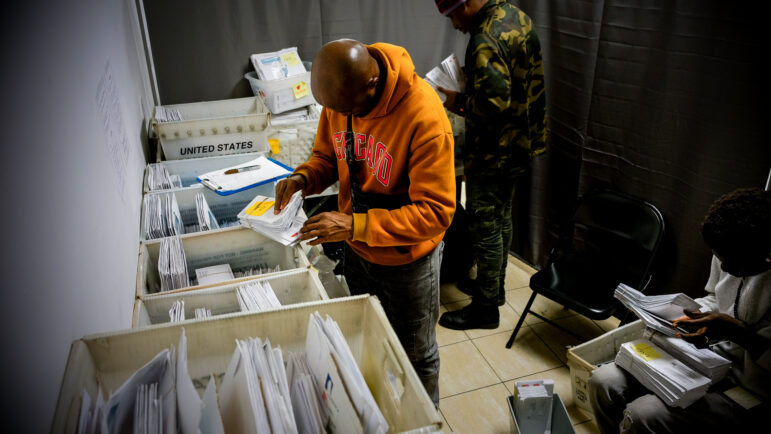
Thomas Good, Metro Centric, Anthony Lanzilote, Pablo029, Atomische, DIana Robinson/Mayor's Office
What’s going on in Canarsie? A new “risk ranking” by the Citizens Committee for Children compares the opportunities and dangers facing kids in New York’s 59 community boards, exploring those life-chances across several categories: economic security, health, housing and more. It’s no surprise that inequality is deeply woven into the map of the city: CCC notes, for instance, that the presence of child poverty in the poorest CD, Hunts Point, is roughly nine times what it is in the least poor, Battery Park/Tribeca. This is simply the math behind Mayor de Blasio’s tale of two cities.
What’s striking about the ranking, though, is that some neighborhoods—mainly those at the extremes—are locked into their position relative to the city. Hunts Point is the highest risk area—ranked #59—over all and in four of the six individual issue areas. The lowest-risk area, Battery Park, ranks either #1 or #2 in five of the six issue categories.
Then you have Canarsie, ranked 31—dead center—overall, but the 16th best place to live when it comes to economic security and the 13th worst place to live when it comes to health. This is true of several of the neighborhoods that exist between the city’s peaks and valleys of opportunity.
The implication of that is this: Many New York neighborhoods face serious challenges, but some of them have substantial material assets to build on and others don’t. Canarsie’s relative economic security should be a tool to improving its health outcomes. Hunts Point doesn’t have that luxury. This reflects the tension inherent in trying to tailor programs like the mayor’s affordable housing plan to meet the city’s needs, which are gaping, widespread and diverse. Given finite resources, does a city attempt to meet a broad range of needs or focus on those neighborhoods and people who need help most?
Other tools for the engaged urbanite that came to our attention or mind this week:
The early history of the NYPD: Tension between the mayor and the police department over use of force. Complaints about the generosity of police pensions. The patrolmen’s union claiming that their members have been slighted. Those are the storylines of policing in New York City today and, according to an excellent new book by veteran NYPD Lt. Bernard Whalen and his father Jon Whalen, have been threads throughout history. “The NYPD’s First 50 Years: Politician, Police Commissioners & Patrolmen” traces the earliest era of the modern NYPD from the Great Consolidation of the five boroughs in 1898 into the post-World War II years.
It’s not quite fair to say nothing has changed: Outright interference in NYPD hiring and promotions was an everyday problem in the early years but isn’t anymore. But there are constants, some more obvious than others. It’s no surprise that danger has always been part of the police officer’s life, but incidents like the World’ Fair bombing of 1939—which killed two detectives and injured four other cops—illustrate just how early foreign terrorism was a threat for the NYPD to confront. That bombing, by the way, remains unsolved. (There’s a reading of the Whalen book February 11 from 6:30 to 8:30 p.m. at Mysterious Book Shop, 58 Warren Street in Manhattan.)
The details of transportation tragedies: The aftermath of the horrible Metro-North accident this week reminded us of the often unsung work of the National Transportation Safety Board, which gets into the news when something horrible happens—usually involving a plane, sometimes a train.
NTSB probes hundreds of lower-profile transportation accidents a year, however, involving not just aircraft and rail travel but also marine and highway transit, as well as pipeline incidents and more. Through the NTSB’s accident information database, one can learn about accidents that never made much news, like a July 2013 derailment of a freight train in the Bronx. It’s not reading that will necessarily make it easier for you to nap peacefully on a plane or interstate bus. But it is a handy thing to keep in mind when someone starts blathering about the evils and inefficiencies of “big government.” Somewhere right now, a federal employee is trying to find out what lessons from an incident you never heard of might save lives down the road.








